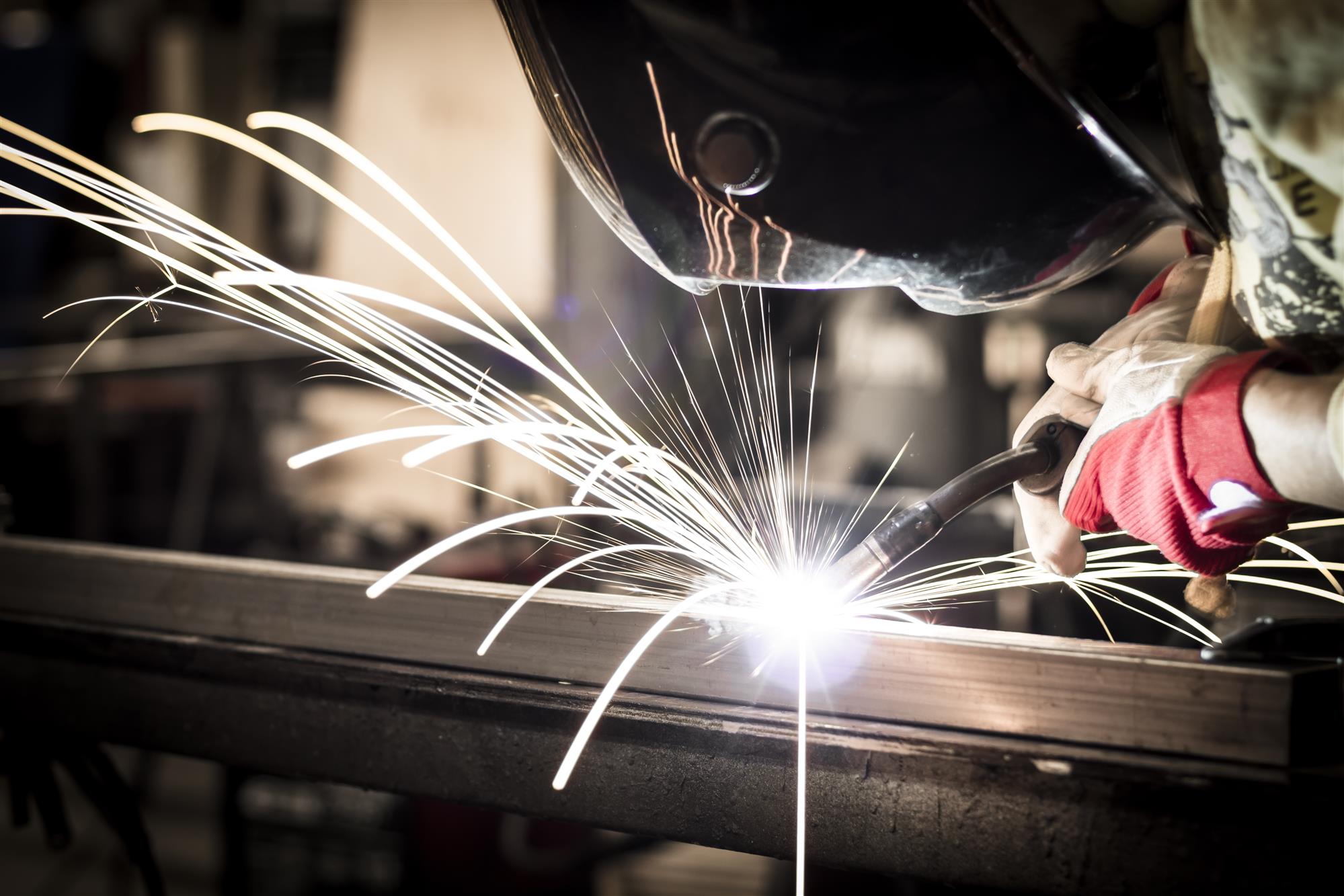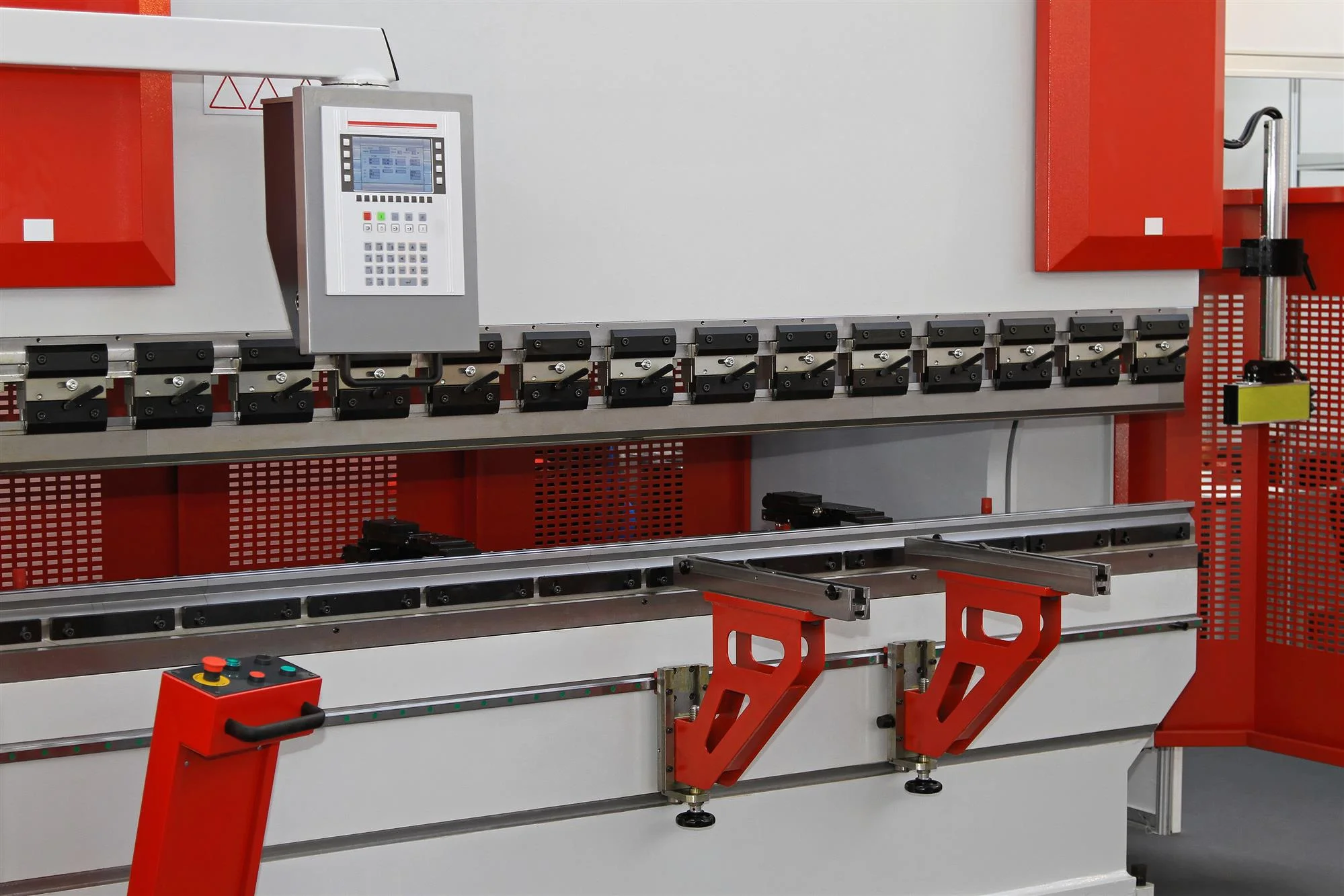Commonly Used Industrial Metals and Their Properties
Discover what metals are the most commonly used in the metalworking and manufacturing industries, along with their properties, in this post by Quantum Machinery Group.
Nine Inch Nails is the first thing that pops into the minds of non-industry people when they think of industrial metal. While that band is an example of industrial metal music, it’s not the stuff that makes up buildings, appliances, and nearly everything else on which we depend.
Almost everyone knows they want a stainless-steel cooking pot, but they most likely don’t know what materials their refrigerators consist of, and that’s unfortunate. The science behind industrial metals is very interesting, especially if you’re in the industry already.
Here, we’ll discuss some of the most common metals used by metalworking machinery today.
Aluminum
Aluminum is a popular metal that’s also known for its light weight. It is highly resistant to corrosion and weathering, making it ideal for indoor and outdoor applications. Aluminum also boasts conductivity and is ductile enough to hammer into sheets and shape into wires.
Aluminum can be used in many ways. Weather-resistance makes it suitable for windows, doors, and other externally facing building components. Outdoor signs and street lights consist mostly of aluminum for the same reason. This metal is also a favorite in automobile parts and bicycles due to its light weight.
Copper
Copper isn’t as glamorous as other metals, but it does remain useful nonetheless. It is highly ductile and malleable, which makes it easy to shape into many different useful forms. Copper is also incredibly easy to solder, and, when used in electronics or plumbing, can create strong bonds and junctions. The orange-tinged metal is resistant to corrosion, especially from water and soil, and features overall flexibility that allows it to handle changes in temperature better than most metals.
Copper comes in soft and rigid variants, depending on its use. Soft copper tubing is present in HVAC systems, refrigeration lines, and heat pumps. Rigid copper is present in water pipes for hot and cold tap water. It’s also the main material found within plumbing pipes, tubes, and household wiring because it’s relatively cheap in comparison to most metals.
Carbon Steel
This variation of steel sees most of its use in heavy-duty applications. Carbon steel gets its name from the fact that it contains very high levels of carbon; this is what gives the metal its strength, durability, and weight. It is tougher and more durable than most other standard metals, giving it great strength, but isn’t as ductile, and, thus, doesn’t always suit small projects.
Carbon steel is the primary material used in massive immobile structures due to its heavy weight. Most applications for this metal exist. It’s what makes up the framework of highways, bridges, and tall or broad buildings, and is an ideal material for support beams and structural framework pieces. Most trailer beds for semis are also made of carbon steel.
Stainless Steel
One of the most common metals is stainless steel. This often-shiny silver metal contains a mixture of steel and at least 10 percent chromium and other alloys. The ratios and types of alloys used depend on the intended function of the object.
Protecting Yourself from Flying Metal Particles
Quantum Machinery Group presents safety tips and precautions you should take when working with different metals to protect yourself and reduce risks of injuries.
Working with metalworking machinery requires taking certain precautions to protect yourself from flying metal particles. Specific areas of the body should be protected including the hands, arms, face, and eyes, as well as other areas of the body. Before discussing various bodily risks, your work wear is just as important as personal protection equipment (PPE).
You should never wear loose-fitting clothes around machinery and equipment that could potentially get caught in moving parts and components and which would result in serious bodily injuries. This also includes employee identification lanyards and neck ties, as these items can swing freely and could accidentally get caught in the machine.
Metal particles of all sizes can contain sharp points and edges. When they become airborne, the amount of force can cause the particles to puncture into different parts of the body without the proper PPE.
Eye Protection
One of the most common types of workplace injuries that could occur without any protection is an injury to one or both eyes. Metal particles can puncture the outer eye as well as get trapped in between the eyelid, resulting in scratched and damaged retinas. Always make sure to wear the right type of safety glasses or goggles to protect your eyes.
Face and Head Protection
There are different types of face masks, hard hats, and other PPE which can reduce the risks associated with flying metal particles.
Hand Protection
When working close to moving parts and components, you want to ensure the hands are protected from metal particles. It is important to choose the right type of work gloves that provide the right protection based upon the type of work being performed. Some gloves are not recommended because they make operating the machinery and handling materials difficult.
Arm and Upper Body Protection
It is a good idea to wear long-sleeved shirts to protect the arms from accidentally cuts and scrapes from flying metal particles. Coveralls or shop coats would be suitable PPE alternatives to ensure the arms and upper body were sufficiently protected.
Lower Body and Legs
Thick jeans or industrial pants should provide protection from most types of flying metal particles. However, in environments where there is a large number of particles being created, coveralls should also be worn to provide an added layer of protection.
Feet
Let’s not overlook the feet because they also need protection, depending on the angle and direction the particles are being emitted from the machinery. Quite frequently, the particles are ejected downward toward the feet. Thick steel-toed work boots are recommended in many working environments as they provide the necessary protection.
Last, prior to starting work on any type of metalworking equipment or machinery, review the safety precautions and required PPE needed to operate the machine. Never, under any circumstances, enter a production or work area without the proper PPE.
For information on the latest metal fabrication and machine shop machinery and equipment, feel free to contact us, here at Quantum Machinery by calling (909) 476-8007 to speak with one of our sales engineers today!
What Should I Look for in an Angle Roll?
Quantum Machinery Group provides a general overview of angle roll machines and how to choose the right one for your metal fabrication or machine shop business.
Angle rolls, also known as profile rolls, section rolls, or simply “rollers,” are all names used for the machines metal fabricators use to make round bends in metal profiles. These rolling machines play a very important role in metal fabrication, and knowing what to look for when selecting an angle roller is essential to the success of a given task.
Let’s take a look at how these machines work, what makes the different varieties of rollers different, and how one should select the appropriate roller for the job they have in mind.
Angle Roll Overview
Angle rolls are very common machines in environments where metal profiles need to be formed to a specific radius or diameter. Angle iron, solid square, solid rectangle, round tubing, and pipe are the most common type of profiles used with this type of equipment.
Because of the wide variety of metals needing to be shaped, and the even wider variety of tasks requiring shaped metal, the fabrication market is full of different varieties of rolling machines, each with its own strengths, weaknesses, and particular uses.
One example of the differences between different angle rolls is capacity. Each rolling machine will be rated according to its strength yield. As an example, rolling machines used to shape plate metal will typically have a yield strength of between 36,000 and 38,000 pounds per square inch (PSI).
Steel mills, on the other hand, often handle metal profiles that require between 48,000 and 58,000 psi. An angle roll that works perfectly well in one environment may not meet the requirements of another.
Another difference between rolling machines is the number of rolls it has. The rolls are the round, spinning parts of the angle roll that allow it to do its job. Every angle roll comes with at least one pinching roll, which is the roll that holds the metal in place and allows it to be fed through the machine. Plate rolling machines come in one or two varieties: single-pinch and double-pinch, referring to how many pinching rolls it has.
Pressing roles, on the other hand, are the part of the machine that does the actual bending. Here there are even more varieties than with pinching roles. Examples of different types of rolling machines based on the number of pressing roles include three-roll double-pinch, four roll double-pinch, three-roll initial pinch, and more.
When determining which rolling machine is best suited for the task one has at hand, it is important to research what each rolling machine is designed to do, and to understand the materials that one will be working with. Manufacturers can usually provide detailed information about their machines, such as capacity and yield.
Compare the manufacturer’s information about how much force a machine can produce and what kind of metals (sheet, roll, etc.) it is designed to handle, and compare this to your site’s mill certificates or other relevant information to see which angle roll best fits your needs.
Want to find out more information about angle rolls and their uses? Contact Quantum Machinery today at 909-476-8007.
Why You Need to Keep Your Metalworking Machine Manuals
Before tossing out the owner's manual that came with your metalworking machine, read this post from Quantum Machinery Group to see why you need to keep it.
Most of us throw away the instruction manual when we buy a new product. Sometimes, we like the challenge of doing it ourselves; other times, we already know how the item works and don’t need to read the same book twice. This works fine for simpler things like vacuum cleaners and bookshelves, but not for more complex machinery. When it comes to advanced equipment, like press brakes and metal benders, it’s very important to keep the manuals somewhere safe and accessible for future reference.
Specifics
Saving manuals is especially crucial for high-tech industrial equipment like machines and devices used in metalworking. In many ways, it’s just as important as saving a vehicle’s manual written by and for mechanics. There’s too many specifics that vary from car to car to keep track of in your head. If you’re doing that, then you may as well memorize an encyclopedia.
These manuals show you the specifics on how to operate the machine in question. They will include the specific numbers needed for settings, ranges, thresholds, and limitations, how to program it, and how to troubleshoot it if it breaks. It’s nearly impossible to remember and quickly recall this information on your own. This is especially true for metal bending because most bending machinery is heavily reliant on brand-specified numbers.
Diagrams
Machine manuals also contain detailed diagrams that explain the inner workings of the machine itself. Most shops just don’t have the time to reverse engineer or perform an autopsy on a machine when it breaks, especially if the shop didn’t create the machine in the first place. Having access to these diagrams solves problems so much faster.
Breakdowns and Troubleshooting
Every machine suffers from wear and tear. Eventually, the parts inside of it will break down. The parts that go into most metalworking machinery are highly specific and calculated in design, so it isn’t as easy as ordering them from Amazon. You won’t find them at your local hardware store, and you need to know the reference numbers for the manufacturer parts you’re looking for. Your machine manual contains all of this information, and much more, saving you time and reducing the headache of guessing what parts you need.
Compatibilities
Your machine manual will also tell you what type of materials your equipment can handle and to what extent it can be pushed. Metalworking requires precise calculations by its nature, so winging it and experimenting with non-compatible equipment is incredibly unsafe. Simply put: It’s safer for your entire shop to consult the manual before using equipment dangerously and causing an accident.
Show, Don’t Tell
Sometimes, it’s easier to show something than it is to describe it. This is especially true when talking to someone over the phone or writing an email where you can only use words. You can use the manual and make a scan of the specific page in the manual that you need and fax or email it the person you’re working with. This also allows you to draw or circle something on the copy without damaging the original, making it easier to communicate broken press brakes or machine failures to repair specialists from a distance.
Missing a machine manual? Need to find press brakes for sale? Quantum Machinery can help. Contact us today for all of your most important metalworking needs.
How to Achieve a Perfect Press Brake Bend
Having difficulties getting that "perfect" press brake bend? Check out this blog from Quantum Machinery Group for steps on getting the best bending results.
Bending metal requires high-tech equipment and a very methodical approach. The steps are linear in nature and cannot be skipped without resulting in failure. Each step of using a press brake depends on the ones before it to achieve success. Use these steps to help you get the metal bend you’re looking for when using press brakes.
Know Your Materials
Different metals have different properties that determine how they react to stress. Metals will naturally bend back closer to their original shape when force is applied to them. Some metals need to be bent more than others to achieve the same end result. Metal also stretches when bent and at different rates, depending on the material. The measurements of the bend are typically determined by the type of metal being used, its thickness, and the shape of the die it is being pressed against.
Create a Drawing
Create a drawing of your desired bend by determining the shape of the bend you want and the materials being used. You can reference drawings from previous runs, if needed, but make sure the new bend is factually correct and consistent.
Select the Bending Method
Choosing the right bending method that’s most appropriate for the bend you want is vital. Most bending methods are very similar to each other, but they do have slight differences. Be sure the details of your plans will work with the method you choose.
Calculate Tonnage
Once you know your bend, calculate the tonnage needed for the bend based on the material, the bend you want, and the bending method being used. There are tonnage charts readily available to search for if there isn’t already one nearby the equipment you’re using.
Assess Tooling Position
Assess the tooling position of your material on the bend. If you find you need more tonnage than the machines concentrated load limit, then you can still do the bend, but it will have to be off-center. Check the press machine being used to see if it allows off-center loading and the limitations it can handle. It’s possible to finish the job by using these off-center guidelines, but it’s not safe to exceed them.
Install the Right Tooling
Install the correct tooling for the job. Once you’ve made the calculations, it’s time to set up the machine itself. This is typically the most time-consuming part of the process, so it’s important to make sure your numbers and processes are accurate. Manually setting up the various parts will vary slightly from machine to machine. Ask a press brake operator or consult the manual if you aren’t sure how to properly set up the machine.
Enter Your Calculations
Input the calculations into the press brake machine. This step highly depends on the machine you are using. Older machines may require some manual programming while newer ones have many things pre-configured.
Test Your Bend
Do a test run! Make sure everything’s good to go before doing a mass production run. If something doesn’t line up, go back to the previous steps and find the problem.
Keep in mind that some parts will have imperfections when you start your mass production. This is expected, and you should do some post-run testing to make sure the products meet your standards. If you need help choosing press brakes, feel free to contact the team at Quantum Machinery today.










